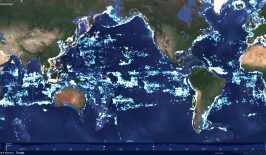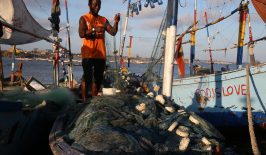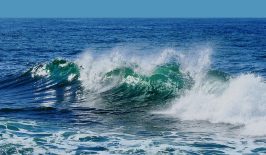A new clean energy harvesting solution could help optimise ocean observation technologies – making them more resilient, powerful, eco-friendly and a whole lot more effective at collecting valuable data.
It’s an innovation that might not sound like very much on land: a renewable energy source able to generate about half the energy of a single AA alkaline battery. But what about at the depths of the ocean, up to 1000 metres below the surface? It’s an innovation that starts to take on another dimention altogether.
Our oceans are constantly being analysed by oceanographers, who use a range of different kinds of research tools to ensure its health. While doctors check blood pressure, pulse and temperature, when checking up on the ocean, scientists need to know things like oxygen, acidiy temperature, and nutrient readings. But because of its vast size, unpredictability and variability, reading the ocean’s vital signs is a challenging endeavour. That’s why oceanographers deploy research tools on devices called profiling floats.
These floats are often in the deep ocean for years, doing occasional dives to map deep ocean temperatures, currents, salinity, and other data. They’re typically equipped with a lithium-ion battery, and an Iridium satellite connection to upload data for researchers to access. While they’re largely autonomous devices, without the need for a ship, propeller, or any manpower to operate them, each float, and therefore our understanding of the ocean, is limited by the shelf life of the battery.
While manufacturers list up to 10 years of operations, or hundreds of dives, batteries naturally wear out. And when that happens, the floats, which may cost more than 100,000 USD are mostly abandoned — because the expense of recovering them from remote areas of the ocean is prohibitive. Floats that cease to function usually continue to drift until they run aground, flood or sink.
The ambition of Seatrec, a start-up out of California, is to help ocean researchers by developing a way to power these floats with renewable energy – a low-power renewable energy thermal engine to be more exact – and therefore extend their useful lives. Seatrec’s technology, which has been successfully tested in the field – or in this case, ocean – and is now commercially available, uses “phase change materials” to harness energy from natural temperature differences that exist in the ocean.
Yi Chao, Seatrec CEO and founder, spoke to RESET about the development of the technology. “The idea of using phase change material to harness energy from the ocean’s temperature difference was pioneered decades ago,” explains Chao. “What we’ve done differently at Seatrec is apply the concept to generating electricity. The idea came about while trying to solve the problem of providing clean, renewable energy to floats while at sea to extend their lives and range.“
Put simply, as the temperature of the ocean rises and falls through its depths, the use of phase change materials can generate power. Think of an example of water changing from ice to liquid and back again. That expansion and contraction can take energy out of the temperature change and cause effects — like what can happen to a forgotten beer bottle or can left in a freezer. Often, an explosion of ice occurs.
In the same way, Seatrec uses a waxy substance, which as it goes through warming and cooling cycles in the ocean, changes forms. This can be used to drive hydraulic fluid to turn a patented generator, and produce power. It’s just enough to power the sensors and communications devices on a float, and it’s, for want of a better word, everlasting. These new types of energy-harvesting thermal engines, branded SL1, can be paired with different instruments for ocean exploration – including ocean floats and gliders. The lifespan of the device is then no longer limited by the battery, as with this system it can simply be recharged at sea. And unlike a solution involving solar panels or wind energy, this kind of thermal engine works underwater and has longevity needed for autonomous floats that spend years at sea.
“The limiting factor for the Navis-SL1 float is now the float’s sensors,” explains Chao. “And since we’ve solved the energy problem, we can use the extra energy to power anti-biofouling devices (e.g., mechanical wipers, UV lights) to extend the life of the sensors.”
And while there are obvious monetary reasons to want to extend the life of super expensive floats, it’s the data that matters. Sending more floats for more regular dives without days in between could see a step-change in the quality of data available to oceanographers. We asked what a gold standard result might look like.
“The most basic information like the depth of our ocean is poorly mapped – we have better maps of the surface of the Moon or even Mars. Less than 20% of the seafloor has been mapped with sufficient resolution. Nothing below the top few inches of the ocean (that can be mapped by satellites) is routinely monitored because of the limited number of ships available for ocean monitoring and it’s difficult to access the deep ocean with autonomous sensors. There are four thousand autonomous profiling floats, but they only profile the ocean every ten days due to the limited energy stored in onboard batteries. The gold standard is to have these four thousand floats profiling the ocean every six hours like weather balloons, and furthermore to deploy 10 times or even 100 times more floats to increase the spatial resolution. More ocean data will improve weather and hurricane forecasts, optimise shipping routes, and help us understand the health of the ocean with detail that was previously impossible.”





